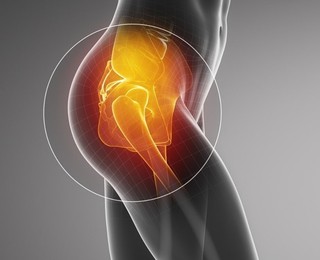Hip Surgeon Melbourne Parminder J Singh provides a range of osteoarthritis hip treatment. In order to understand osteoarthritis hip treatment, this article will help the reader to understand more about osteoarthritis and the treatment of this debilitating condition.
Causes of osteoarthritis of the hip joint
 In the majority of people, osteoarthritis signs and symptoms are limited to one or only a few joints. The symptoms related to primary osteoarthritis of the hip are generally uncommon in people under the age of 40, although can occur. Severe symptoms in younger persons will usually be associated with underlying factors such as pre-existing joint disorders
In the majority of people, osteoarthritis signs and symptoms are limited to one or only a few joints. The symptoms related to primary osteoarthritis of the hip are generally uncommon in people under the age of 40, although can occur. Severe symptoms in younger persons will usually be associated with underlying factors such as pre-existing joint disorders
- Congenital dysplasia of the hip
- Repetitive occupational-related trauma,
- Femero-acetabular impingement,
- Old fractures,
- Avascular necrosis
- Metabolic disorders.
The onset of osteoarthritis is frequently insidious (slow onset).
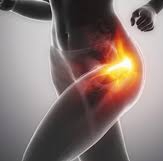 Symptoms may be continuous or intermittent. The symptoms often include:
Symptoms may be continuous or intermittent. The symptoms often include:
- Pain in the groin,
- Side of the hip,
- Buttock and thigh.
At first the pain may only be noticed after the joint is used and be relieved by rest. However, when OA becomes severe and advanced, pain is experienced at rest and often awakens the person at night. Joint stiffness is also a feature of OA. It is generally localised and of short duration – less than 30 minutes. Stiffness tends to follow periods of inactivity and is characteristically present first thing in the morning after waking. A limp is common with hip osteoarthritis.
Advanced disease brings:
- Limitation in the range of joint movement, although total loss of movement is rare.
- Deformity,
- Instability
- Muscle wasting
The diagnosis of osteoarthritis is typically diagnosed following clinical assessment. This comprises identifying the patient is suffering from the above-mentioned symptoms combined with a clinical examination. A review of the gait is often associated with a limp and the patient may have difficult standing on one leg. Assessment of range of motion may well reveal a reduction in the normal range of motion of the hip joint. There may be a difference in the leg length also of the affected hip due to the attrition of the hip joint cartilage.
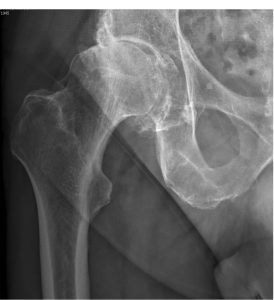 Radiological signs of osteoarthritis of the hip joint
Radiological signs of osteoarthritis of the hip joint
Review of the x-rays of the hip joint are likely to reveal four radiological signs consistent with osteoarthritis. These comprise:
- a reduction in the hip joint space,
- associated with osteophytes (bone spurs),
- subchondral cysts (fluid filled space inside the bone)
- subchondral sclerosis (hardening of the bone below the cartilage surface).
 The non-surgical treatment treatments of osteoarthritis of the hip joint
The non-surgical treatment treatments of osteoarthritis of the hip joint
- Physiotherapy (Glad Program)
- Trial of anti-inflammatory medication / foods
- Use of a walking aid
- Lifestyle modification.
Temporary forms of pain relief for osteoarthritis of the hip joint
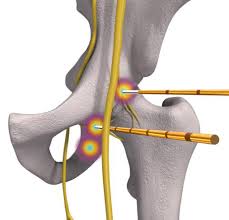
There are other forms of pain relief that may be able to help temporarily reduce the pain. Hip Surgeon Melbourne Parminder J Singh provides treatment comprising radiofrequency ablations treatment that can provide up to 12 months of reduction of pain in some patients.

Hip Surgeon Melbourne Parminder J Singh provides Injection treatment that comprises hip injection with gels such that contain high levels of hyaluronic acid (naturally occurring molecule that provide the lubrication and cushioning in the normal joint). These hip injections of gel may help in some patients provide a reduction of pain for up to 6 months.
What to do if non-operative management is not working for osteoarthritis of the hip joint?
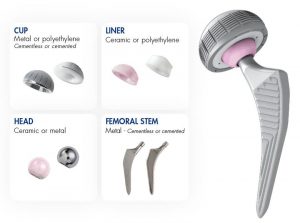 Finally, if the arthritis is severe and failing to improve with conservative management, minimally invasive hip replacement surgery including anterior and mini posterior approach will help relieve pain, improve the mobility and quality of life in 95% of patients. Using either technique, the vast majority of patients will be able to walking independently within 2-4 weeks.
Finally, if the arthritis is severe and failing to improve with conservative management, minimally invasive hip replacement surgery including anterior and mini posterior approach will help relieve pain, improve the mobility and quality of life in 95% of patients. Using either technique, the vast majority of patients will be able to walking independently within 2-4 weeks.
Mini hip replacement
![]()
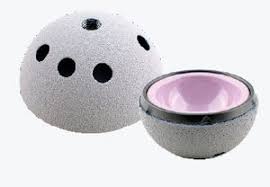 Hip surgeon Melbourne Parminder J Singh, also does provide osteoarthritis hip treatment under the age of 40-60 using minimally invasive techniques and mini hip replacements to help preserve the bone.
Hip surgeon Melbourne Parminder J Singh, also does provide osteoarthritis hip treatment under the age of 40-60 using minimally invasive techniques and mini hip replacements to help preserve the bone.
Hip arthroscopy
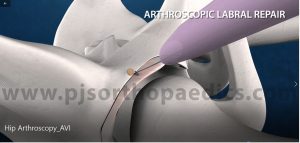 Femero-acetabular impingement is one of the commonest causes of premature osteoarthritis of the hip joint. Hip Surgeon Melbourne Parminder J Singh does treat patients with femero-acetabular impingement if there is>3mm of joint space using key holes techniques (hip arthroscopy) to in order to reshape bone, repair labral tears and repairs cartilage in an attempt to preserve the natural joint for as long as possible.
Femero-acetabular impingement is one of the commonest causes of premature osteoarthritis of the hip joint. Hip Surgeon Melbourne Parminder J Singh does treat patients with femero-acetabular impingement if there is>3mm of joint space using key holes techniques (hip arthroscopy) to in order to reshape bone, repair labral tears and repairs cartilage in an attempt to preserve the natural joint for as long as possible.


